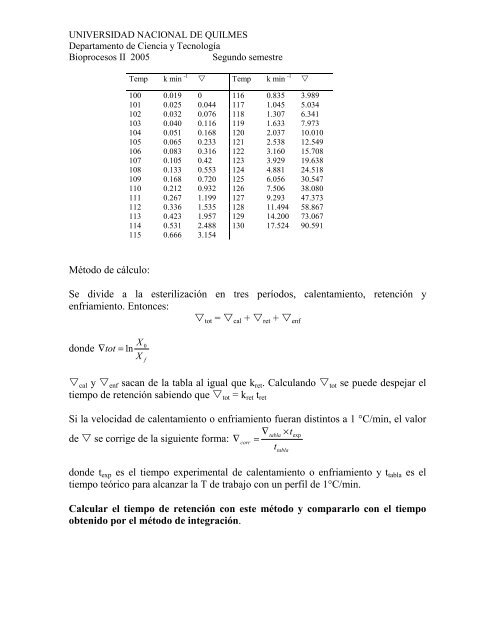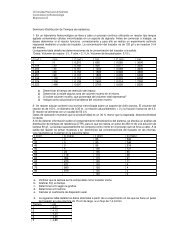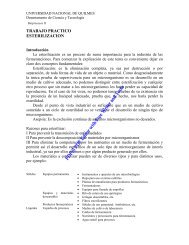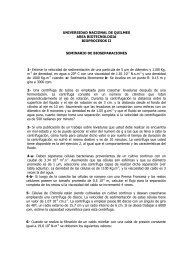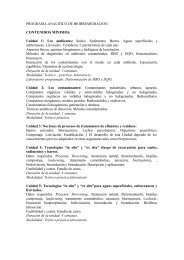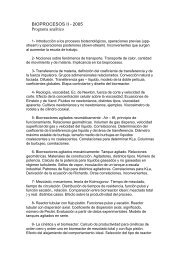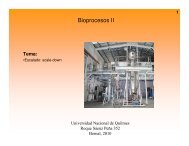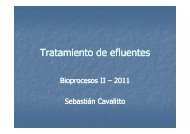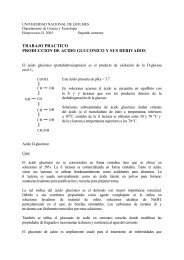TRABAJO PRACTICO - Universidad Nacional de Quilmes
TRABAJO PRACTICO - Universidad Nacional de Quilmes
TRABAJO PRACTICO - Universidad Nacional de Quilmes
You also want an ePaper? Increase the reach of your titles
YUMPU automatically turns print PDFs into web optimized ePapers that Google loves.
UNIVERSIDAD NACIONAL DE QUILMES<br />
Departamento <strong>de</strong> Ciencia y Tecnología<br />
Bioprocesos II 2005<br />
Segundo semestre<br />
Temp k min -1 Temp k min -1 <br />
100 0.019 0 116 0.835 3.989<br />
101 0.025 0.044 117 1.045 5.034<br />
102 0.032 0.076 118 1.307 6.341<br />
103 0.040 0.116 119 1.633 7.973<br />
104 0.051 0.168 120 2.037 10.010<br />
105 0.065 0.233 121 2.538 12.549<br />
106 0.083 0.316 122 3.160 15.708<br />
107 0.105 0.42 123 3.929 19.638<br />
108 0.133 0.553 124 4.881 24.518<br />
109 0.168 0.720 125 6.056 30.547<br />
110 0.212 0.932 126 7.506 38.080<br />
111 0.267 1.199 127 9.293 47.373<br />
112 0.336 1.535 128 11.494 58.867<br />
113 0.423 1.957 129 14.200 73.067<br />
114 0.531 2.488 130 17.524 90.591<br />
115 0.666 3.154<br />
Método <strong>de</strong> cálculo:<br />
Se divi<strong>de</strong> a la esterilización en tres períodos, calentamiento, retención y<br />
enfriamiento. Entonces:<br />
tot = cal + ret + enf<br />
don<strong>de</strong><br />
X<br />
0<br />
∇ tot = ln<br />
X f<br />
cal y enf sacan <strong>de</strong> la tabla al igual que k ret . Calculando tot se pue<strong>de</strong> <strong>de</strong>spejar el<br />
tiempo <strong>de</strong> retención sabiendo que tot = k ret t ret<br />
Si la velocidad <strong>de</strong> calentamiento o enfriamiento fueran distintos a 1 °C/min, el valor<br />
∇tabla<br />
×t<br />
<strong>de</strong> se corrige <strong>de</strong> la siguiente forma:<br />
exp<br />
∇<br />
corr<br />
=<br />
t<br />
don<strong>de</strong> t exp es el tiempo experimental <strong>de</strong> calentamiento o enfriamiento y t tabla es el<br />
tiempo teórico para alcanzar la T <strong>de</strong> trabajo con un perfil <strong>de</strong> 1°C/min.<br />
Calcular el tiempo <strong>de</strong> retención con este método y compararlo con el tiempo<br />
obtenido por el método <strong>de</strong> integración.<br />
tabla


